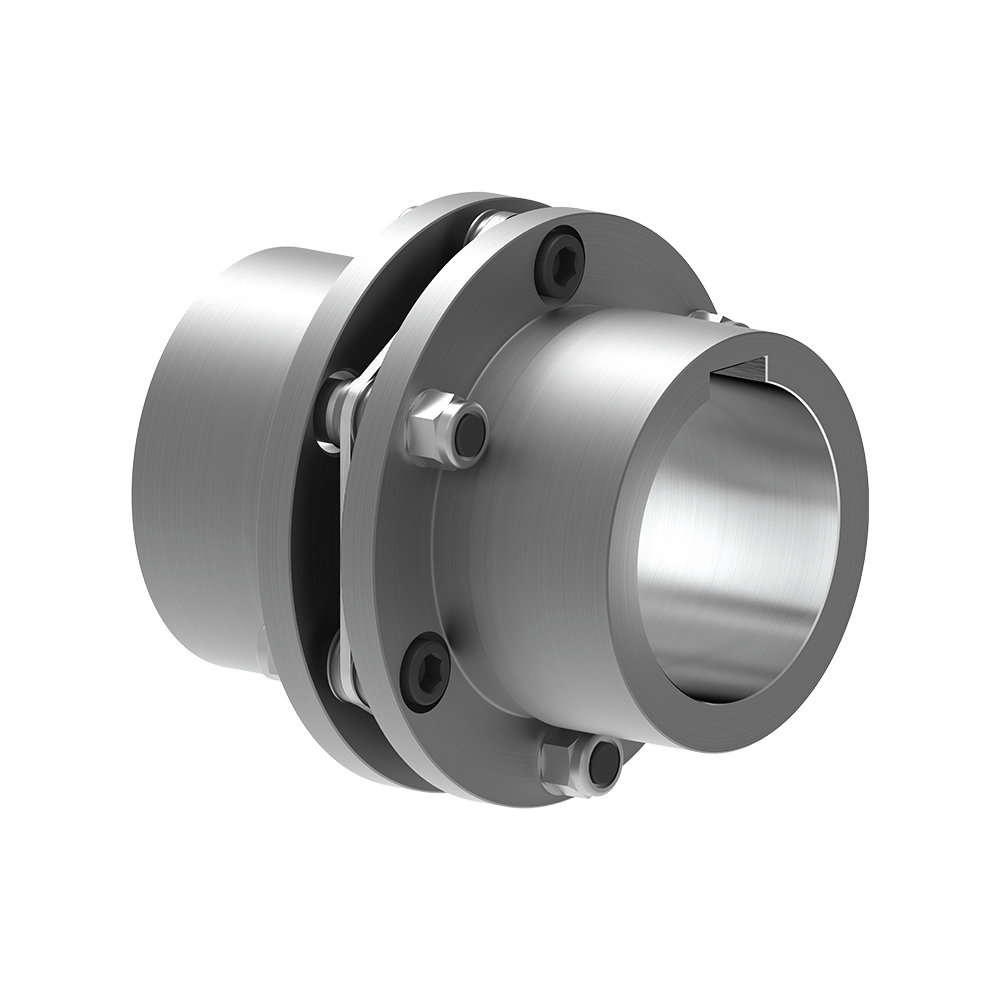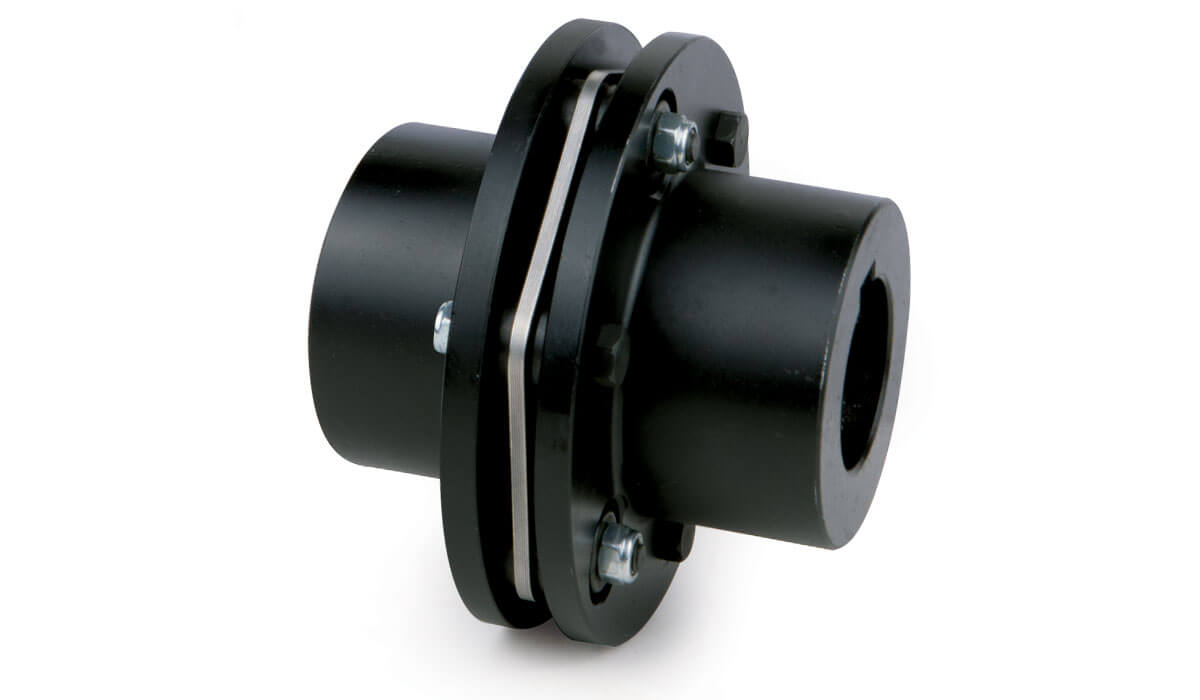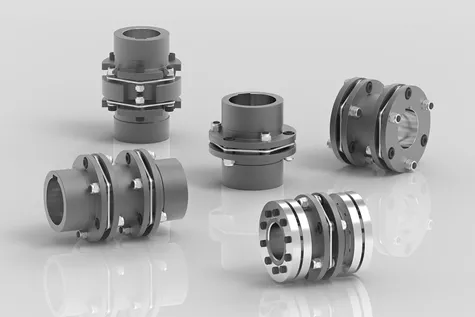Product Description
Industrial Single Piece elastic diaphragm Cushion Cast Iron H Type Flex disc Jaw Flexible Coupling With Rubber Elastomer
Metal flex couplings are disc type couplings in which several flexible metallic elements are alternately attached with bolts to opposite flanges. As polymeric elastomer is replaced by metal disc, Metal Flex coupling provides excellent temperature capability without sacrificing angular and axial misalignment. The coupling provides low axial and bending stiffness while possessing high torsional rigidity. The stretched shim pack design of CHINAMFG Metal Flex couplings provides zero backlash. CHINAMFG Metal Flex couplings are available up to 13367 Nm torque with single shim pack (UMK) and double shim pack (UMS) series.
FEATURES
1.Power to weight ratio high
2.Accommodates angular and axial misalignments
3.High temperature application
4.Visual inspection is possible without dismantling equipments
5.Low axial stiffness with high torsional rigidity
6.High-speed capacity
7.Range up to 12000 Nm
8.Added advantage of stretch fitted shim pack
|
Material Available |
Stainless Steel:SS201,SS301, SS303, SS304, SS316, SS416 etc. |
|
CNC Turning |
φ0.5 – φ300 * 750 mm,+/-0.005 mm |
|
CNC Milling |
510 * 1571 * 500 mm(max),+/-0.001 mm-+/-0.005 mm |
|
Surface Finish |
Aluminum:Clear Anodized,Color Anodized,Sandblast Anodized,Chemical Film,Brushing,Polishing,Chroming. |
|
Drawing Format |
IGS,STP,X_T ,DXF,DWG , Pro/E, PDF |
|
Test Equipment |
Measurement instrument, Projector, CMM, Altimeter, Micrometer, Thread Gages, Calipers, Pin Gauge etc. |
Production workshop:
Manufacturer of Couplings, Fluid Coupling, JAW Coupling, can interchange and replacement of lovejoy coupling and so on.
A coupling can interchange and replacement of lovejoy coupling is a device used to connect 2 shafts together at their ends for the purpose of transmitting power. The primary purpose of couplings is to join 2 pieces of rotating equipment while permitting some degree of misalignment or end movement or both. In a more general context, a coupling can also be a mechanical device that serves to connect the ends of adjacent parts or objects. Couplings do not normally allow disconnection of shafts during operation, however there are torque limiting couplings which can slip or disconnect when some torque limit is exceeded. Selection, installation and maintenance of couplings can lead to reduced maintenance time and maintenance cost.
Company information:
/* January 22, 2571 19:08:37 */!function(){function s(e,r){var a,o={};try{e&&e.split(“,”).forEach(function(e,t){e&&(a=e.match(/(.*?):(.*)$/))&&1

Indicators of Wear or Damage in Disc Couplings
Disc couplings can exhibit signs of wear or damage over time due to factors like misalignment, overloading, or general usage. Detecting these issues early is crucial for preventing further damage. Some common indicators of wear or damage in disc couplings include:
- Vibration: Excessive vibration during operation can signal misalignment, component wear, or imbalance in the disc coupling.
- Noise: Unusual noises like clicking, clanking, or rattling can indicate wear, misalignment, or damage in the coupling components.
- Heat Generation: Excessive heat near the coupling area can suggest friction or misalignment issues.
- Reduced Performance: Decreased efficiency, torque transmission, or system performance may point to coupling wear or damage.
- Visual Inspection: Look for signs of visible wear, corrosion, cracks, or deformation on the coupling components.
To detect these signs of wear or damage, regular visual inspections, vibration analysis, and performance monitoring are essential. Early detection allows for timely maintenance or replacement of the affected components, ensuring the continued reliability and safety of the disc coupling and the machinery it serves.

Suitability of Disc Couplings for High-Speed Rotation and Critical Alignment
Disc couplings are well-suited for applications involving high-speed rotation and critical alignment due to their unique design and performance characteristics:
- High-Speed Rotation: Disc couplings can handle high rotational speeds while maintaining their balance and integrity. Their lightweight and compact design minimize the effects of centrifugal forces, making them suitable for high-speed applications.
- Critical Alignment: Disc couplings offer excellent flexibility and angular misalignment compensation. They can accommodate axial, radial, and angular misalignments, making them suitable for applications where maintaining precise alignment is crucial.
- Torsional Stiffness: Disc couplings can provide a balance between flexibility and torsional stiffness, allowing them to transmit torque accurately even in critical alignment scenarios.
- High Torque Capacity: Many disc couplings are designed to handle high torque loads, making them suitable for applications with demanding torque requirements.
- Resonance Damping: The flexible nature of disc couplings can help dampen vibrations and reduce the risk of resonance, which is important in high-speed applications.
When selecting a disc coupling for high-speed rotation and critical alignment, it’s essential to consider factors such as torque requirements, speed range, misalignment compensation, space limitations, and dynamic behavior to ensure optimal performance and reliability in the specific application.

Function of Disc Couplings in Torque Transmission and Misalignment Compensation
Disc couplings are designed to transmit torque between two shafts while accommodating various forms of misalignment. The primary components of a disc coupling include two hubs and a flexible disc element made of a resilient material such as stainless steel. Here’s how a disc coupling works to transmit torque and handle misalignment:
- Torque Transmission: When torque is applied to one hub of the disc coupling, it induces angular displacement in the flexible disc. The flexible disc element bends slightly, allowing the torque to be transmitted from one hub to the other. This bending action of the disc results in an elastic deformation, which helps maintain the torque transfer.
- Angular Misalignment Compensation: Disc couplings can accommodate angular misalignment between the two connected shafts. As the hubs are misaligned angularly, the flexible disc element compensates by bending at an angle. The disc’s flexibility and the elastic properties of the material allow it to absorb and accommodate the angular misalignment without transmitting excessive forces to the connected machinery.
- Parallel Misalignment Compensation: In cases of parallel misalignment, where the axes of the two shafts are not perfectly aligned, the disc coupling can also absorb a certain degree of parallel offset. The flexibility of the disc allows for slight axial movement, ensuring that the hubs remain connected even when there’s a minor parallel misalignment.
- Torsional Stiffness: While disc couplings are designed to accommodate misalignment, they also exhibit torsional stiffness. This means that under normal operating conditions, the disc coupling remains rigid enough to efficiently transmit torque between the shafts, minimizing torsional deflection and maintaining the integrity of torque transfer.
The design and material properties of the flexible disc element play a crucial role in determining the coupling’s ability to handle misalignment while transmitting torque effectively. Disc couplings are widely used in various industrial applications where torque transmission and misalignment compensation are critical requirements.


editor by CX 2024-04-08